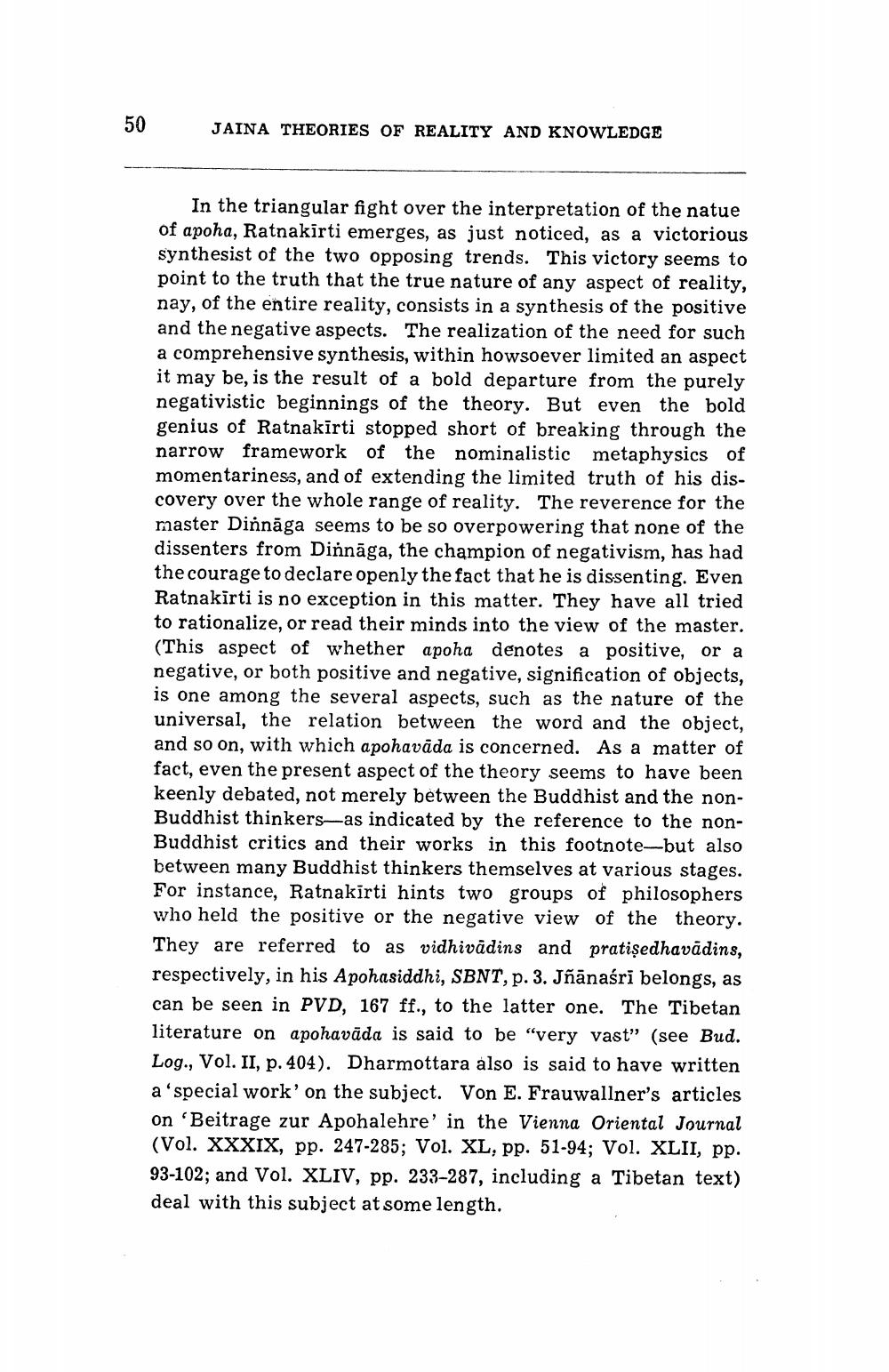________________
50
JAINA THEORIES OF REALITY AND KNOWLEDGE
In the triangular fight over the interpretation of the natue of apoha, Ratnakirti emerges, as just noticed, as a victorious synthesist of the two opposing trends. This victory seems to point to the truth that the true nature of any aspect of reality, nay, of the entire reality, consists in a synthesis of the positive and the negative aspects. The realization of the need for such a comprehensive synthesis, within howsoever limited an aspect it may be, is the result of a bold departure from the purely negativistic beginnings of the theory. But even the bold genius of Ratnakirti stopped short of breaking through the narrow framework of the nominalistic metaphysics of momentariness, and of extending the limited truth of his discovery over the whole range of reality. The reverence for the master Dinnāga seems to be so overpowering that none of the dissenters from Dinnāga, the champion of negativism, has had the courage to declare openly the fact that he is dissenting. Even Ratnakirti is no exception in this matter. They have all tried to rationalize, or read their minds into the view of the master. (This aspect of whether apoha denotes a positive, or a negative, or both positive and negative, signification of objects, is one among the several aspects, such as the nature of the universal, the relation between the word and the object, and so on, with which apohavāda is concerned. As a matter of fact, even the present aspect of the theory seems to have been keenly debated, not merely between the Buddhist and the nonBuddhist thinkers—as indicated by the reference to the nonBuddhist critics and their works in this footnote-but also between many Buddhist thinkers themselves at various stages. For instance, Ratnakirti hints two groups of philosophers who held the positive or the negative view of the theory. They are referred to as vidhivādins and pratişedhavādins, respectively, in his Apohasiddhi, SBNT, p. 3. Jñānaśri belongs, as can be seen in PVD, 167 ff., to the latter one. The Tibetan literature on apohavāda is said to be "very vast" (see Bud. Log., Vol. II, p. 404). Dharmottara also is said to have written a special work' on the subject. Von E. Frauwallner's articles on 'Beitrage zur Apohalehre' in the Vienna Oriental Journal (Vol. XXXIX, pp. 247-285; Vol. XL, pp. 51-94; Vol. XLII, pp. 93-102; and Vol. XLIV, pp. 233-287, including a Tibetan text) deal with this subject at some length.




